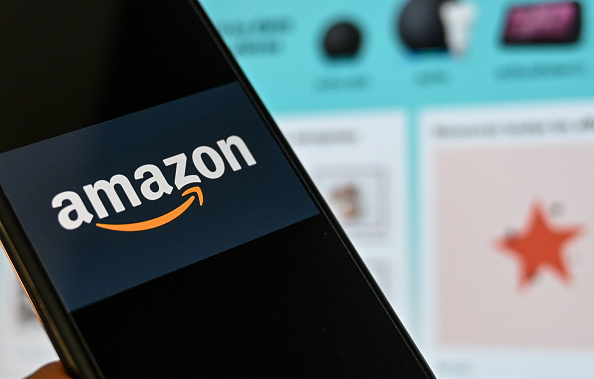Pricing has always been a complex issue for businesses. And as more and more consumers use both online and in-store browsing when they shop, it has become even more complicated.
Coming up with the perfect price used to mean considering factors such as margins, competitor pricing, and consumer price sensitivity. But with modern shoppers increasingly using price check apps and shopping across multiple channels, the pressure is on to modernise pricing. How you do this will vary depending on your business, but you will need to consider the following areas below when embarking upon a journey to become a modern enterprise for the modern consumer.
While maintaining consistent pricing across digital and physical channels will certainly help to provide a consistent shopping experience for your customers, trying to keep your prices the same all the time for all your selling channels isn’t always possible (or necessary).
For one, the operating costs of a brick-and-mortar store can be very different from e-commerce, and retailers need to factor this in when they’re setting their prices for each channel. And unlike e-commerce sites, which can implement dynamic pricing based on time of day and individual shopper behaviour, physical stores can’t move as quickly. Changing price tags can be a big job and staff may have other priorities, like spending more time with customers.
Instead of trying to keep up with the fast-paced nature of online pricing, it may be more practical to monitor your e-commerce counterparts, and ensure your brick-and-mortar prices stay within a reasonable range of these online prices. It pays to be as consistent as possible without sacrificing customer satisfaction or employee time.
Many merchants carry out self-matching policies where they’ll match their prices online, if their customers ask. Numerous UK retailers, including John Lewis, Currys, Evans Cycles and Mothercare, all price match on particular products to get one-up on their competition. But this tactic isn’t always feasible, especially for small businesses who may end up losing money if they try to keep up with the lowest prices in the market. Before you embark on a new pricing strategy consider what you can afford and how you compare to your competition.
Technology, training, and bundles
If you decide to implement a matching policy (whether it’s matching your own prices or your competitors’) ensure that you have technology in place to support your pricing policy. A successful modern price strategy requires real-time visibility of pricing, product, and sales information across multiple channels, which means your online and offline stores must be able to sync and share data seamlessly.
You can opt for a business solution that offers both brick-and-mortar and e-commerce capabilities so you can run all your stores’ channels on just one platform. This makes accessing and syncing data quick and straightforward, and you can prevent issues such as double-sells or data inaccuracies. Or, you can choose to integrate your e-commerce site with your offline store, and enable the two systems to talk to each other and share pricing, inventory, and customer data.
You also need to factor in staff training. Modern pricing policies that involve matching online or competitor prices may make your shop assistants’ jobs a bit more complicated, so strive to provide adequate training before you implement your strategies. Make sure your employees are aware of your policies, and are able to communicate them to your customers.
There are ways of price matching your products while retaining some ambiguity against your competitors. For example, you can use complex promotions of bundled products or services to make price-matching by competitors harder. Other sectors use this strategy, for bundled broadband, cable TV and phone packages for instance. A study done by Carnegie Mellon University shows that consumers preferred product bundling when coupled with an option to buy each piece individually. So if you are already bundling or planning to bundle, provide the single products as options as well.
Can’t afford to price match?
Entering into a price war can be problematic. In 2013 IRI’s European Price and Promotion report revealed the UK as the ‘promotion capital’ of Europe, with 55 per cent of food bought on offer, showing a growing reluctance to pay full price for goods. The impact of this is twofold: the research showed that while promotions are popular with UK consumers, they are failing to boost sales volumes and are eroding brand loyalty.
In short, consumers are starting to make purchase decisions based on the best price rather than the product value. When you consider that price advantages are short lived (when one player in the market cuts prices, the others follow) and customer behaviour changes (customers associate the lowest prices with certain goods long after the price wars have ended), price matching doesn’t make sense for all businesses. If you choose to exclude yourself from a tussle over price, you’ll need to find ways to compete on factors other than price. You can add value to the shopping experience and your products through things like personalisation, convenience, lifestyle, and loyalty programs.
For example, Rockets & Rascals, a bike store and cafe based in Devon, uses a loyalty programme to provide a point of difference for customers. ‘I can’t think of single more powerful tool for a business in the modern time than loyalty, it reaches across and slaps the face of businesses that choose to trade only on price and gives you a warm feeling knowing that every time you make a sale you’re giving your best customers something back. We have more than 850 customers on our loyalty programme and they use it avidly,’ says Steve Toze, marketing director of Rockets & Rascals.
And, if you don’t, or can’t, differentiate on price you can look to differentiate on customer service, especially as research shows that 81 per cent of shoppers would actually pay more for better customer services.
Don’t set pricing in stone
The saying goes, ‘if you can’t beat them, join them’. Price-matching is a widely-used marketing tool by businesses all around the world – even the big behemoths.
Whatever strategy you decide to implement, know that there is no ‘one-size-fits-all’ solution when it comes to pricing policies. Products in high demand tend to be less price elastic, meaning that changes in price won’t affect the quantity demanded. Therefore, test your price increases with your most popular items; it will help you determine how customers will react to price fluctuations.
Your pricing policies shouldn’t be set in stone. The market is constantly evolving, and so must your strategies. Revisit your pricing regularly, and always keep that modern consumer in mind.





